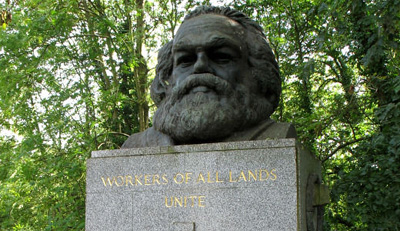
1. As they completed their lives and work in the last decades of the 19th century, both Marx and Engels saw Czarist Russia as
a. A place where socialist revolution was impossible;
b. A dangerous power threatening “Western Civilization;”
c. A semi-feudal empire on the brink of a bourgeois (capitalist) revolution;
d. A nation whose working class would soon establish socialism.
2. The Russian Revolution of 1905;
a. Ended with the establishment of a liberal constitutional monarchy;
b. Saw the formation of people’s councils (Soviets) that served as a “dress rehearsal” for the October Revolution;
c. Led the Czar to proclaim religious freedom and the separation of church and state;
d. Was led by Japanese agents seeking victory for Japan in the Russo-Japanese War.
3. The October Revolution (1917) followed the February Revolution in which
a. The masses forced the abdication of the Czar;
b. Soviets were established along with a provisional government led by bourgeois groups;
c. The provisional government continued Russia’s involvement in WWI, its payment of its debts to its allies and opposed the land seizures and factory occupations of the masses;
d. All of the above.
4. The differences between the two major Russian Marxist parties, the Bolsheviks and the Mensheviks in the aftermath of the February Revolution was that
a. The Mensheviks supported the capitalist provisional government as a necessary stage in the revolution and the Bolsheviks opposed the provisional government and called for the establishment of a revolutionary government of the Soviets;
b. The Mensheviks supported Russia’s continued involvement in the war to protect the revolution while the Bolsheviks called for Russia’s withdrawal from the war, an imperialist war, to save and advance the revolution;
c. The Mensheviks believed that a transition to socialism was impossible because of Russia’s backwardness and the Bolsheviks believed that a transition to socialism was both possible and necessary to prevent a counter-revolution which would end either in Czarist restoration or military dictatorship rather than any capitalist democracy;
d. All of the above.
5. The October 1917 revolution ended with
a. Support from the victorious allied powers and new League of Nations;
b. Rejection by workers and peasants who demanded free market capitalism;
c. The formation of the Third International (Comintern) and the rapid globalization of ideas and parties influenced by the Soviet revolution;
d. The defeat of the revolution through foreign military intervention, civil war and general isolation.
Answers: Click here.


 Join Now
Join Now